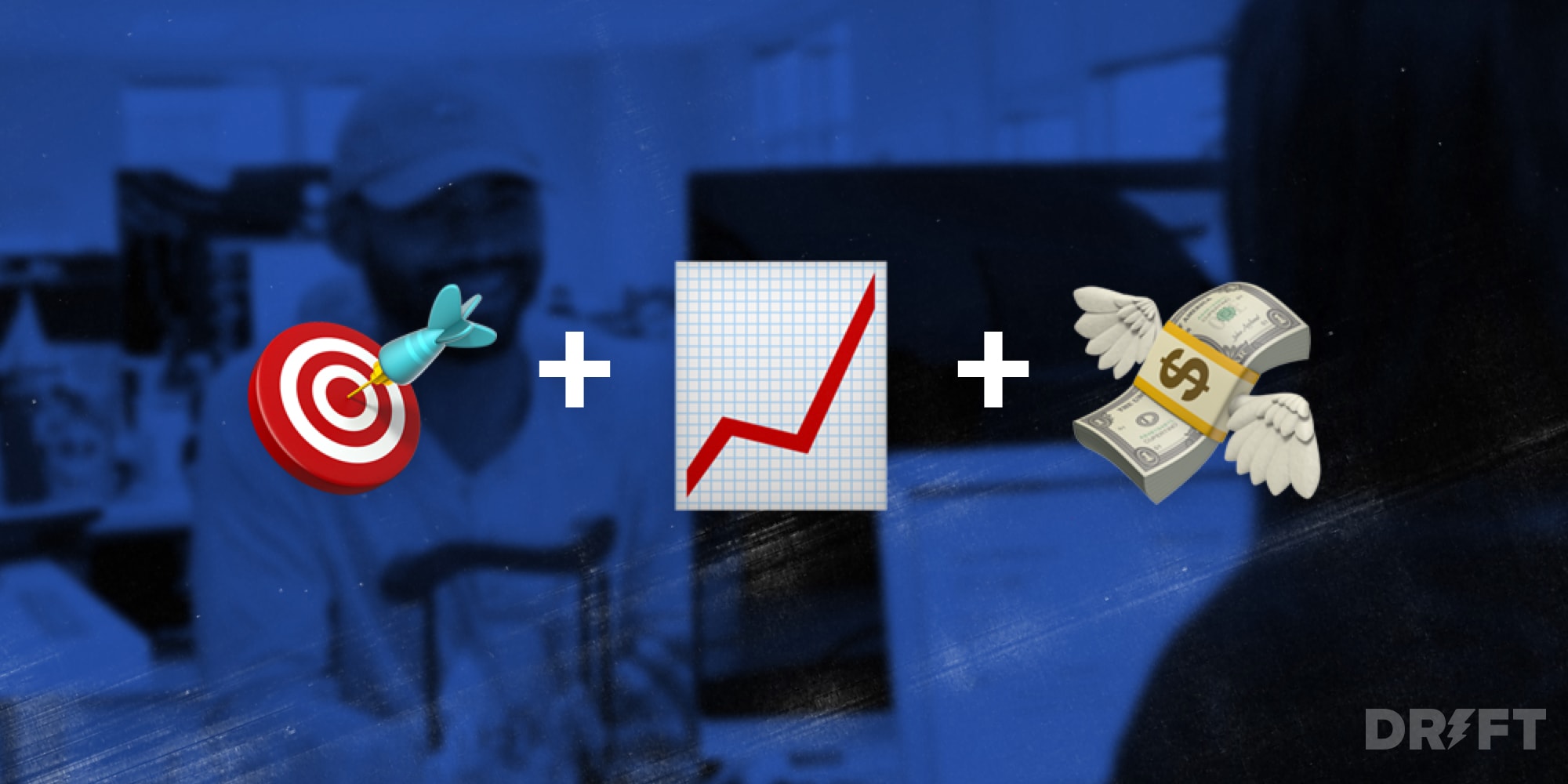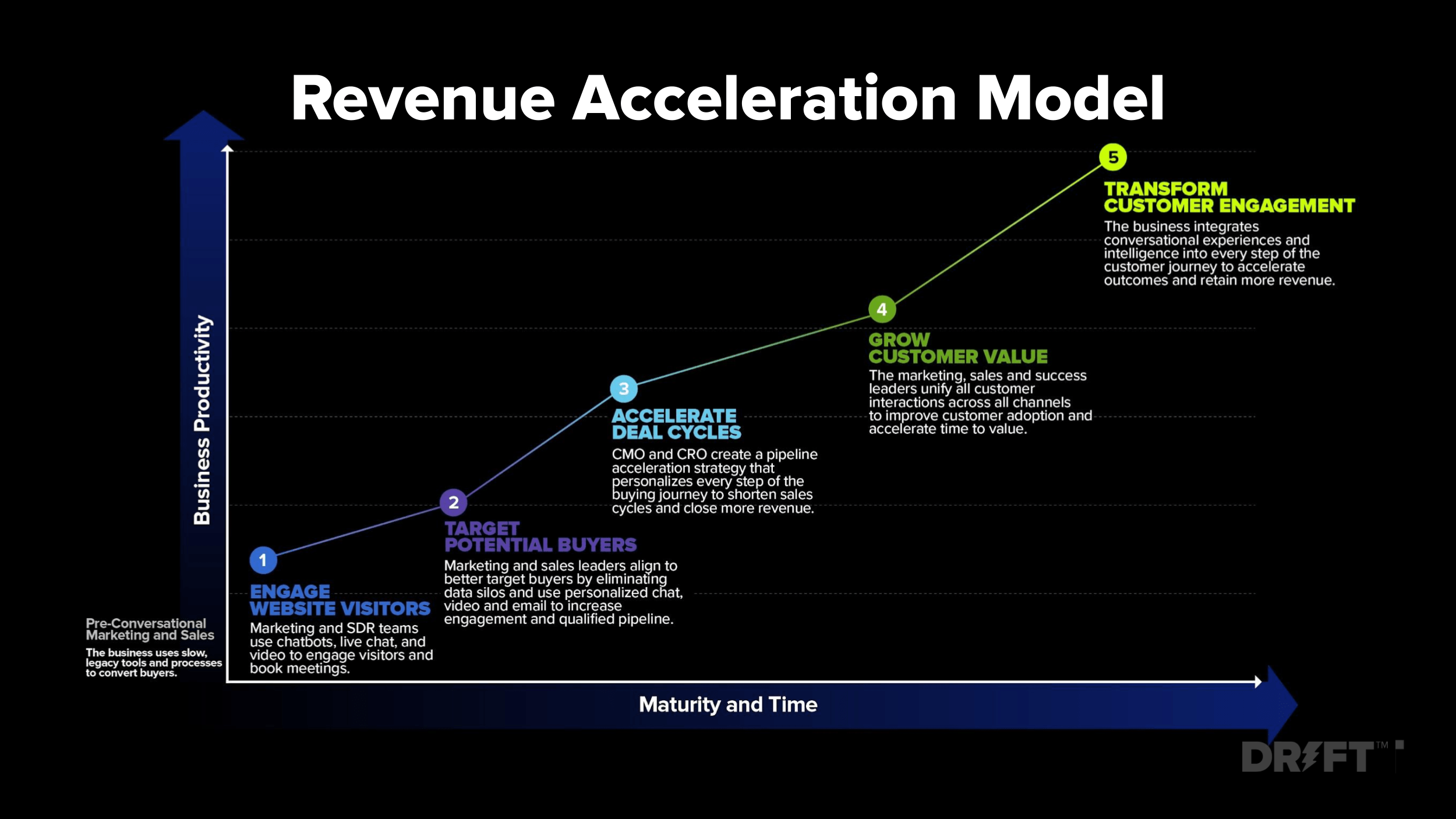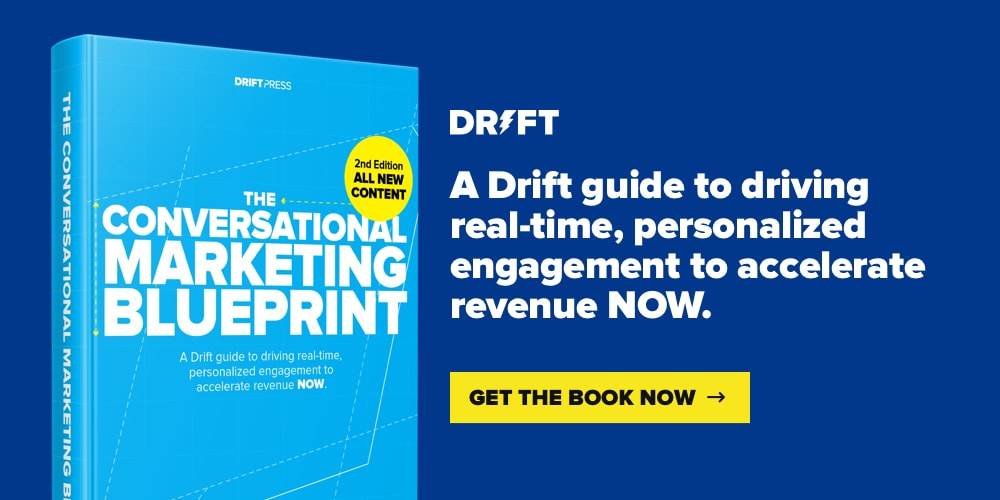
When you ask marketers what’s most important to them, they’ll tell you about traffic and leads. Ask sales reps the same question, and they’ll say SQLs and bookings. Pose it yet again to the customer success team, you’ll hear about customer health and retention.
But underneath all those metrics is a common foundation: revenue.
Marketers attract buyers to drive revenue. Sales reps close deals to drive revenue. And customer success delights customers to retain and drive more revenue. Sure, traffic, SQLs, and customer health scores matter – but growth comes from Revenue Acceleration.
There are two main ways businesses can accelerate revenue:
- The first option is to make your customer’s buying journey as personal and authentic as possible. You do that by acknowledging that each buyer has different needs, desires, expectations, and challenges. Then you design the best experience for each customer, which will remove friction and allow you to build stronger relationships.
- The second is to streamline and optimize how your marketing, sales, and customer success teams engage buyers and move them through the buying journey. Instead of having three go-to-market teams pulling towards three separate goals, Revenue Acceleration unites them behind a shared objective. Your employees collaborate to produce a seamless conversation for buyers. That conversation flows from a prospect’s first touchpoint all the way through their buying journey and long-term customer experience.
Many organizations struggle to nail both of these approaches. Often, they don’t recognize the link between them. When your internal processes are clunky, your customer experience struggles. And when your customer experience slides, it ramps up pressure on your employees and systems.
It’s easy to say that both elements are important. It’s simple to say you need to improve both in tandem. But how do you actually get there? That’s where our new Revenue Acceleration model comes in.

Conversational Marketing reimagines how you engage potential buyers. It creates instant and personalized engagement with customers and buyers. It removes friction, turning the buying process into an enjoyable experience.
Deeper into the deal cycle, Conversational Sales take over. Instead of sticking to formulaic sales scripts, your reps use the same approach to build trust and credibility with buyers and turn them into customers.
Revenue Acceleration combines Conversational Marketing and Conversational Sales to unite your go-to-market teams. It creates connections with buyers in real-time and delivers personalized customer experiences. This will increase your revenue, shorten your sales cycles, and strengthen your brand.
In this blog, we’ll explore the inner workings of our new model. You’ll learn how it touches every level of your business – from the first interaction a buyer has with your website all the way through their customer experience and renewal process. You’ll discover how it can transform your organization and usher in a new era of business growth. Let’s jump in.
Stage #1 – Engage Website Visitors
Do you remember, back in pre-COVID times, what it was like to shop at Nordstrom?
From the moment you walked in the door, the store’s staff treated you like a VIP. Greeters waved hello. Personal shoppers guided you from one department to another. And stylists helped you pick out the perfect outfit.
Now, compare that to most B2B buying experiences online. As a customer, when you land on a website, you’re on your own. You’re left to read, research, and learn without any support. It’s not because businesses don’t care about you. It’s because they don’t have a way to engage their visitors in a way that mimics authentic in-person interaction.
They don’t know who’s on their site. They can’t filter information and connect with high-intent visitors fast enough. And even when a visitor feels motivated enough to make the first move, it’s unclear how to book a demo or talk to someone to get help. There are no second chances here – 88% of people say they’re less likely to return to a site after a bad experience.
The first stage of revenue generation is about fixing those problems. Your goal is simple: engage every single person who visits your website, start conversations, and generate meetings. By building this foundation, you create conversations and relationships – both of which deepen your understanding of the buyer.
“I knew a form wasn’t the way anymore,” says Adrian Cohn, Director of Brand and Communications at Smartling, reflecting on his customer experience journey. “We had to modernize our web experience and make it easier for potential customers to connect with us.”
With Conversational Marketing, you can attend to customers 24 hours a day. Better than that, Conversational Marketing can interact with visitors and gauge their interest. Are they a red-hot buyer primed to convert, or are they just starting their research? Either way, you can qualify visitors and let sales know when to engage. As soon as the notification is sent, your reps can jump into the conversation and engage buyers in real-time.
Stage #2 – Target Potential Buyers
Marketers invest huge amounts of time, energy, and resources into campaigns to attract potential buyers to their site. They tempt readers with outstanding content, entice searchers with paid ads, and pique the interest of target accounts with ABM.
But after getting visitors to their site, things start to go wrong.
Many organizations lack visibility into who is even on their site. In their analytics, unknown organic traffic, high-quality target buyers, and customers all look exactly the same. Opaque insights make it impossible to deliver tailored experiences, and so every visitor gets the same vanilla messaging and experience. Considering modern buyers rank customer experience as a greater consideration than both price and product, that’s a recipe for disaster.
In the absence of data, most businesses resort to casting a wide net, hauling in one unqualified lead after another, and passing everything to their sales org. But even the best salespeople can’t work miracles. Low-quality leads always drive a low return on investment.
In the second stage of Revenue Acceleration, your goal switches to pipeline. Instead of engaging a broad audience, you target specific groups of potential buyers and deliver the personalized experience they’re looking for. Your paid traffic gets one experience while existing customers enjoy a different one. And your high-value target accounts – they get the red carpet.
Conversational Marketing lifts the curtain on your audience. You can see exactly where visitors came from and align your channel, offer, and messaging. Suddenly, your visitors aren’t receiving the same generic experience. From the moment they land on your site, everything is about them: their background, motivation, challenges, and needs.
Conversational Sales helps you understand your buyers more deeply. Sales reps can instantly target high-value accounts and tap into rich data revealing who they are, what they’re looking for, and when they’re on your site. Ineffective, generic conversations are out. Highly personalized interactions built around each individual buyer are in.
When you deliver that sort of experience, you delight your buyers. More than 70% expect companies to interact in real-time and 64% expect experiences tailored to their past interactions. Align your customer experience to those expectations and you’ll increase the likelihood of conversion and improve your ROI.
Stage #3 – Accelerate Deal Cycles
Tailoring interactions based on marketing channels takes engagement to a new level. But to deliver an even greater customer experience, you need to go deeper. You need to build interactions around buyers’ individual needs, desires, expectations, and challenges.
That’s what the third stage of Revenue Acceleration is all about. You’re turning the dial on personalization to maximize conversions. You’re looking for people coming to your website in a buying mindset. You’re helping them find answers, support, and products as quickly as possible. And you’re doing it with artificial intelligence.
By augmenting your sales and marketing teams with sophisticated AI, you bring Conversational Marketing and sales to a whole new level. Instead of delivering a series of discrete options and shepherding buyers from one branch to the next, your tech understands what your buyers are saying and responds intelligently.
But automation is only half the equation.
“While I’d love to have sales devs or inside sales reps ‘man’ live chat, it’s not feasible for us,” says TreeRing’s Director of Marketing, Leo Strupczewski. “Sales needs to focus on talking to prospects.”
Now that your account executives have insight into your buyers, their background, and their deal cycle progress, they can get involved at the perfect moment. Whenever they spot a gap in the conversation, your AEs can drop in and take over in real-time and add a human touch.
Now, each buyer’s experience is constructed around their unique circumstances. Not only that, but it’s automated, too. By harnessing the power of AI and humans, you can maintain personal conversations with one or 100 buyers. If you get it right, the payoff is huge. Customer experience leaders stand to achieve revenue gains of 5-10%, while reducing customer experience program costs by 15-25% within two or three years.
Stage #4 – Grow Customer Value
When you close a deal and sign up a new customer, it can feel like the job is done – like it’s time to crack open the champagne and celebrate. But really, that customer’s relationship with your business is just getting started.
When businesses overlook the importance and extent of customer relationships, things start to go south. If they overlook onboarding and training, the customer may feel like they’re fumbling with their new product or service. Considering 57% of executives say their onboarding process is only “somewhat effective,” this is clearly a widespread problem.
Without clear channels of communication, the customer won’t know where to turn to ask a question. When they hit a dead end and seek help, they endure inconsistent support experiences.
It’s no surprise that average customer churn rates are north of 10%.
It doesn’t have to be like that. As Taylor Goldsmith, Marketing Manager at Keet Health, says: “There’s never been a better time to put customer-centricity into action.”
By equipping your customer success team with Conversational Sales, you can provide AI-powered support around the clock. If a customer needs help at midnight, they don’t have to wait until your support reps log back on. A personal assistant is ready and waiting. Being there for your customers on their terms deepens their adoption – and that’s what this stage is all about. You ensure customers explore every feature, seize every opportunity, and become dedicated power users.
Your AI-powered frontline support is just the beginning. By triaging your customer’s challenges, problems, and issues, you can connect them with the right person instantly. Instead of ping-ponging from one department to another, customers with billing issues go straight to your finance department, those with technical queries get sent to tech support, and so on.
By getting to customers faster, connecting them with the right people, and guiding them to the right resources and content, you deepen each customer’s connection with your business. That helps them adopt your solution, increases their value, and drives more revenue.
Stage #5 – Transform Customer Engagement
Acquisition feels new and exciting. Signing up new logos feels like growth.
But look at the data and you’ll see that retaining existing clients is five times less expensive than finding new ones. Even a small 5% reduction in churn can boost profits by up to 95%.
When businesses ignore retention, they fall into bad habits and often deliver a lackluster experience to their customers. Their renewal and engagement strategies become disjointed and out of date. They struggle to reach customers and respond to their needs efficiently. Existing customers end up feeling like they’re not getting enough value – and they cancel.
In the fifth stage of Revenue Acceleration, you transform customer engagement into an experience that delights your customers, maximizes revenue retention, and creates loyal customer advocates.
You harness customer insights and implement AI to create the best possible experiences for your customers. You track customer behavior and identify issues before they become problems. And your engagement isn’t limited to problems. Instead, you use the insights your AI uncovers for you to proactively improve your customer experience.
By overhauling your engagement strategy, you improve the customer experience, build stronger relationships with customers, and increase customer lifetime value (CLV). But the benefits extend far beyond just one happy customer. Remember that 84% of B2B sales start with a referral. As customer loyalty guru, Chip Bell, once said: “Loyal customers, they don’t just come back, they don’t simply recommend you, they insist that their friends do business with you.”
Become a Revenue Accelerator
Revenue Acceleration isn’t a radical idea. Ask any business executive if they want more revenue and they’ll respond, “Sure!”
The real change is how you pursue it.
If you want to accelerate revenue, you need to break out of the old mentality that says revenue comes from either improving customer experience or optimizing processes. Because today, it comes from both.
Revenue Acceleration revolutionizes your entire customer experience. It lets you treat all your visitors like VIPs and engage target buyers in personalized one-to-one conversations. It helps you augment deal cycles with artificial intelligence, transform your customer onboarding process, and supercharge your ongoing customer engagement strategy.
You remove friction and transform the sales process into an experience buyers genuinely enjoy. And by doing so, you attract more customers and forge more loyal relationships – driving up customer lifetime value.
At the same time, it helps you optimize your own business processes. Because you’re using AI to greet customers, triage their needs, and deliver frontline support, your employees are free to focus on the jobs, tasks, and projects that demand human attention. It’s all about working more efficiently – driving down your customer acquisition cost and increasing customer value.







